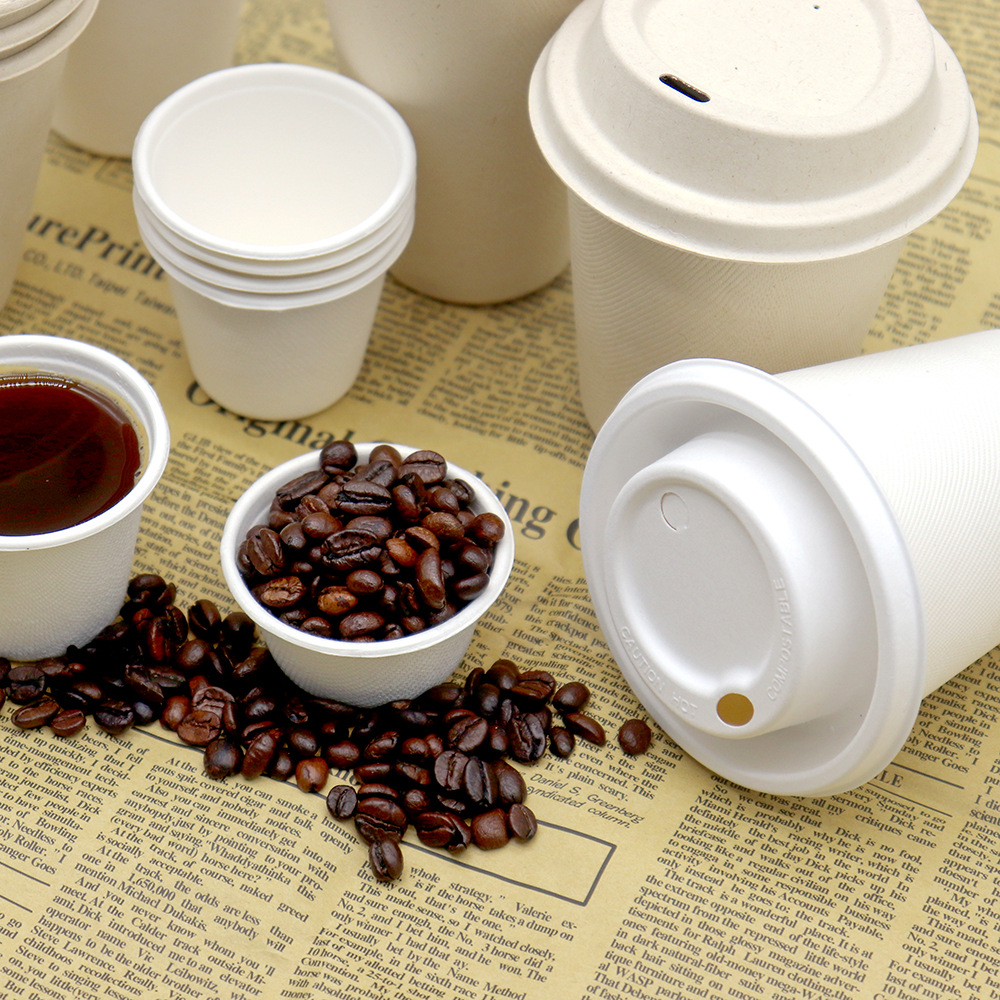
Struggling to choose the right disposable cups? You’re not alone.
This guide explains how to select disposable cups based on your use case, materials, cost, and suppliers.
Keep reading to avoid costly mistakes and pick what actually works for your business.
Who Needs This Guide?
Confused by too many options for disposable cups?
Restaurants, hotels, cafes, and distributors can all benefit from better cup sourcing choices.
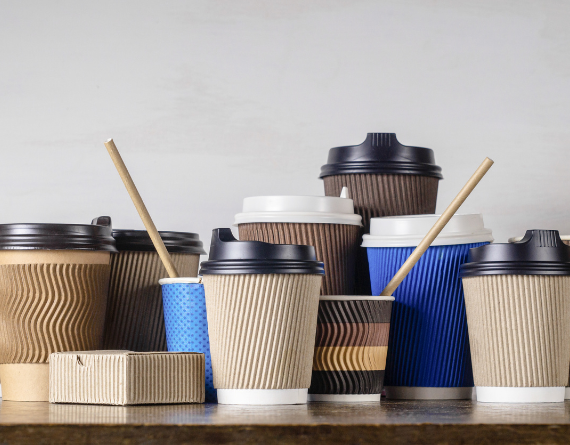
Who benefits from this article?
If you work in the food service industry, this guide is for you. I’ve seen all kinds of clients—restaurant chains, coffee shop owners, catering companies, and supermarket buyers—struggle to find cups that match their needs. They often face common problems like broken shipments, high prices, or wrong sizes.
Let’s break down who needs this the most:
| Sector | Cup Use Case | Key Challenge |
|---|---|---|
| Restaurants/Cafes | Hot drinks, iced coffee, smoothies | Heat resistance, eco demands |
| Hotels/Airlines | Room service, inflight beverage | Brand image, portion control |
| Catering Companies | Events and food trucks | Volume, stackability, transport |
| Retailers | Private label cups for resale | Customization, variety, MOQ |
| Distributors | Wholesale supplies to B2B clients | Stock reliability, profit margin |
Each of these users needs something slightly different, but most of them want three things: a sustainable product, good price, and dependable delivery.
How to Determine the Occasion?
Choosing wrong cup type ruins customer experience fast.
You must match cup type with its real-world use, such as hot coffee or cold drinks.
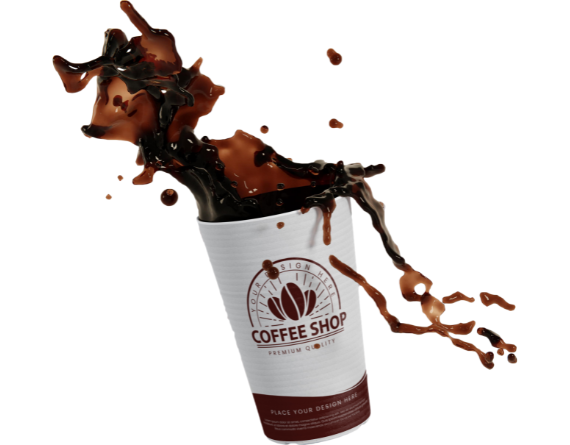
How do I match cups with the right setting?
Let’s say a café uses the same cup for hot espresso and iced tea. That’s a mistake. Why? Because each setting demands different performance.
Use this comparison to stay on track:
| Occasion Type | Beverage Temp | Suggested Material | Why it matters |
|---|---|---|---|
| Coffee Shop | Hot | Bamboo fiber | Heat resistance, branding options |
| Smoothie Bar | Cold | PLA or bagasse | Insulated feel, biodegradable |
| Outdoor Festival | Mixed | Paper or bamboo | Lightweight, large quantities needed |
| Office Pantry | Hot or cold | Bamboo fiber | Safety, hygiene, consistent supply |
| Airline/Hotel Use | Hot | Bamboo fiber | Non-toxic, formal presentation |
I often recommend clients define the drink type first. Only then can we suggest a cup that delivers on insulation, leak resistance, and customer satisfaction.
How to Estimate Quantity Needed?
Underestimating or overordering costs time and money.
Estimate the correct number of cups based on foot traffic or event size.
How do I plan cup orders without waste?
When I talk with clients like Zack, their main fear is running out of cups or sitting on unused inventory. Planning starts with data. I ask them to consider three factors: average daily sales, type of drink sold, and event duration.
Here’s a sample planning chart:
| Business/Event Type | People Served Daily | Cups Per Person | Total Cups/Day |
|---|---|---|---|
| Small Café | 100 | 1.5 | 150 |
| Wedding Catering | 200 | 2 | 400 |
| Corporate Office Pantry | 300 | 1.2 | 360 |
| Food Truck Festival | 1000 | 1.8 | 1800 |
Most food service companies reorder monthly. Multiply your daily needs by 30 to get a base monthly number. I always suggest adding a 10% buffer for errors or promotions.
What Materials Are the Best Eco-Friendly Options?
Not all “eco cups” are truly green.
Compare materials like plastic, paper, PLA, bagasse, and bamboo to find what’s sustainable and safe.
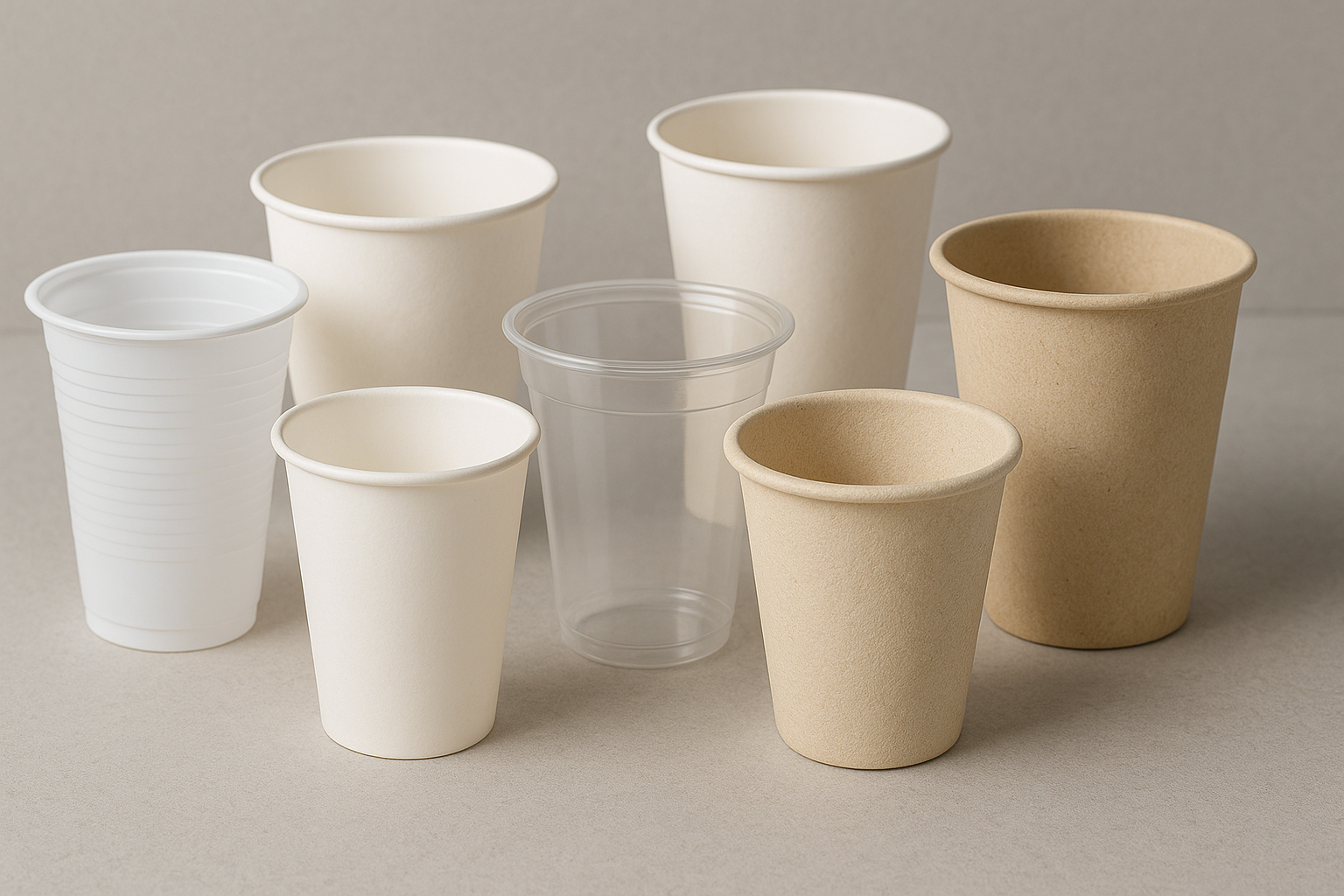
What are the real pros and cons of each material?
The eco label is everywhere, but not all sustainable-sounding cups deliver the same value. Here’s how they stack up:
Material Comparison Table
| Material | Pros | Cons | Certifications Available |
|---|---|---|---|
| Plastic | Cheap, available | Not eco, bans in many regions | Often none |
| Paper | Easy branding, low cost | Coating makes it hard to compost | FSC (sometimes) |
| PLA | Plant-based, industrially compostable | Needs special composting facilities | BPI, OK Compost |
| Bagasse | Sugarcane waste, biodegradable | Not great for hot liquids | FDA, BPI |
| Bamboo Fiber | Fast-growing, durable, fully compostable | Premium feel, strong supply chain | FSC, FDA, BPI, ISO |
I’ve found bamboo fiber cups hit the sweet spot. They look good, hold up under heat, and comply with most eco-label requirements. That’s why we invested in China’s first automated bamboo fiber production line at PANABAM. It helps us keep quality stable, pricing competitive, and delivery efficient.
What Cup Sizes and Capacities Should You Offer?
Giving the wrong size frustrates customers.
Know your drink types and pair them with right-sized cups to avoid waste and spillage.
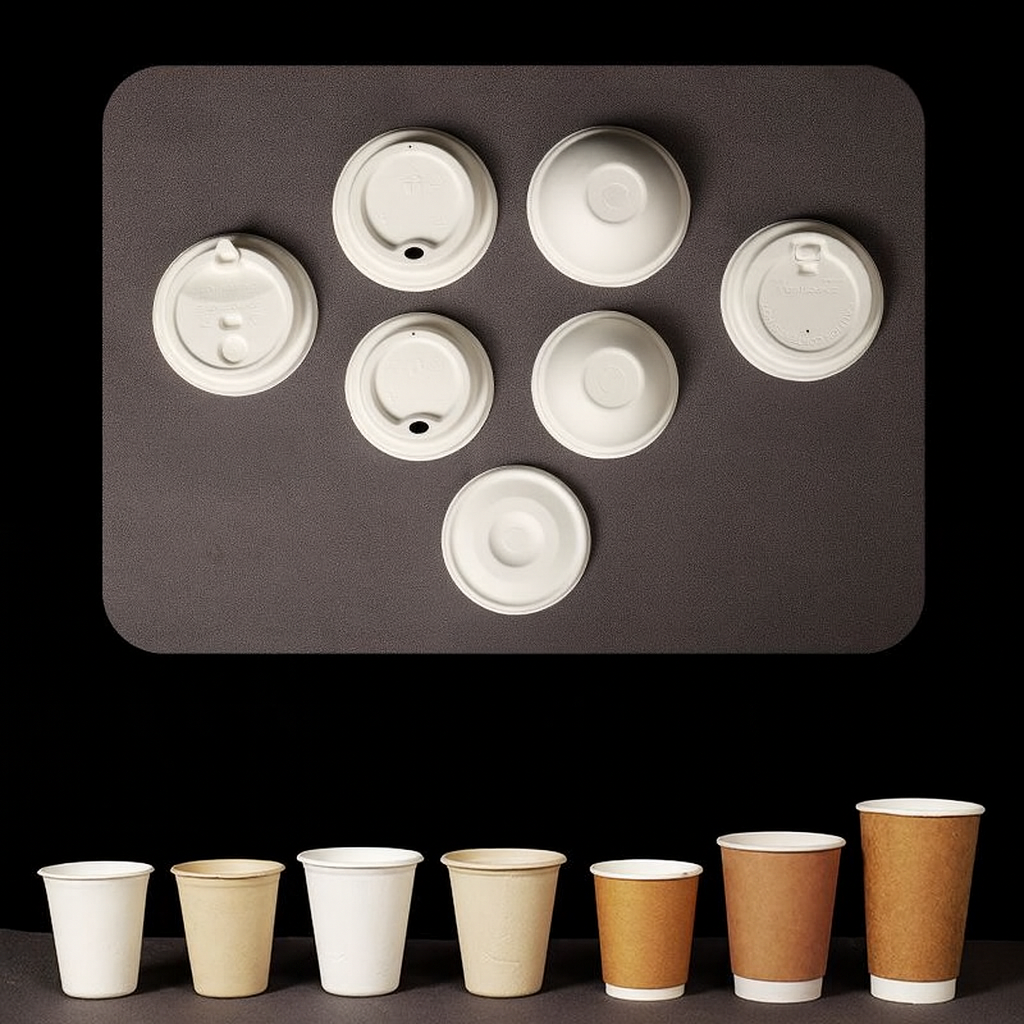
What cup sizes work best for different drinks?
Your customers don’t all drink the same thing. Cold brew takes up more room than a flat white. A smoothie needs a lid and straw hole. That means your sizes must vary.
Here are common size options:
| Use Case | Size (oz) | Typical Beverage | Suggestion |
|---|---|---|---|
| Espresso | 4 | Single/double shot | Paper or bamboo fiber |
| Small coffee | 8 | Hot drinks | Bamboo fiber |
| Medium drinks | 12 | Latte, hot chocolate | Bamboo fiber with sleeve |
| Large cold drinks | 16–20 | Smoothie, iced tea | PLA or bagasse |
I often help customers narrow their options by analyzing what sells the most. There’s no need to stock every size if 80% of sales go to one or two types.
What Design and Style Options Exist?
Plain cups lose branding opportunities.
Custom prints and natural aesthetics can boost brand perception and make cups more functional.
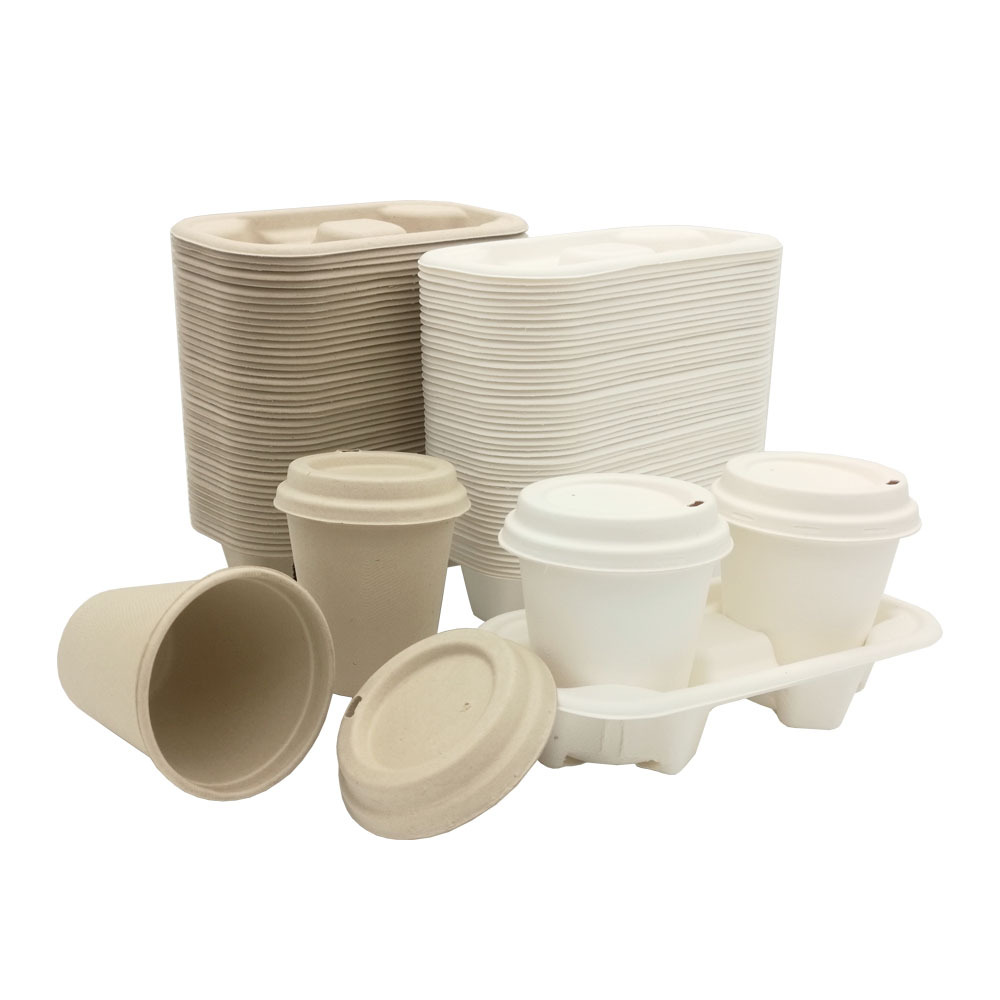
How does design affect function and brand image?
Zack once told me he cared more about price than look—until a café chain chose a competitor just because their cup had cleaner print and better color matching.
Design goes beyond logos. It includes texture, color, print method, and packaging:
| Feature | Why It Matters |
|---|---|
| Custom Logo Print | Boosts recognition, tells your story |
| Packaging Design | Protects during shipping, retail-ready |
| Natural Finish | Matches eco-brand values |
| Lid Compatibility | Prevents spills, fits multiple sizes |
| Stackable Shape | Saves space, speeds service |
With bamboo fiber, you get a naturally appealing texture. We can also print your logo in soy-based ink and deliver retail-ready packs that reduce breakage.
How to Evaluate Suppliers for Bulk Orders?
One bad supplier ruins the whole order.
Check for certifications, capacity, shipping reliability, and customization support before buying in bulk.
How do I filter reliable suppliers?
I’ve dealt with many buyers who were burned by poor sourcing. They often found suppliers through online marketplaces, only to face late deliveries or unapproved materials.
Use this checklist before you place a bulk order:
| Evaluation Area | Key Questions |
|---|---|
| Certifications | Do they have FDA, FSC, BPI, ISO? |
| MOQ Flexibility | Can they handle small and large runs? |
| Production Capacity | Can they meet urgent demand? |
| Custom Options | Do they support logo printing? |
| Logistics Handling | How do they pack and ship globally? |
| Communication | Are they responsive and in your time zone? |
PANABAM has passed most major certifications. We ship worldwide with stable lead times. We also provide samples so you don’t take risks with the first order.
How to Balance Cost and Quality?
Cheap cups often break or leak.
The key is to compare total value—not just price per piece—to choose the best solution.
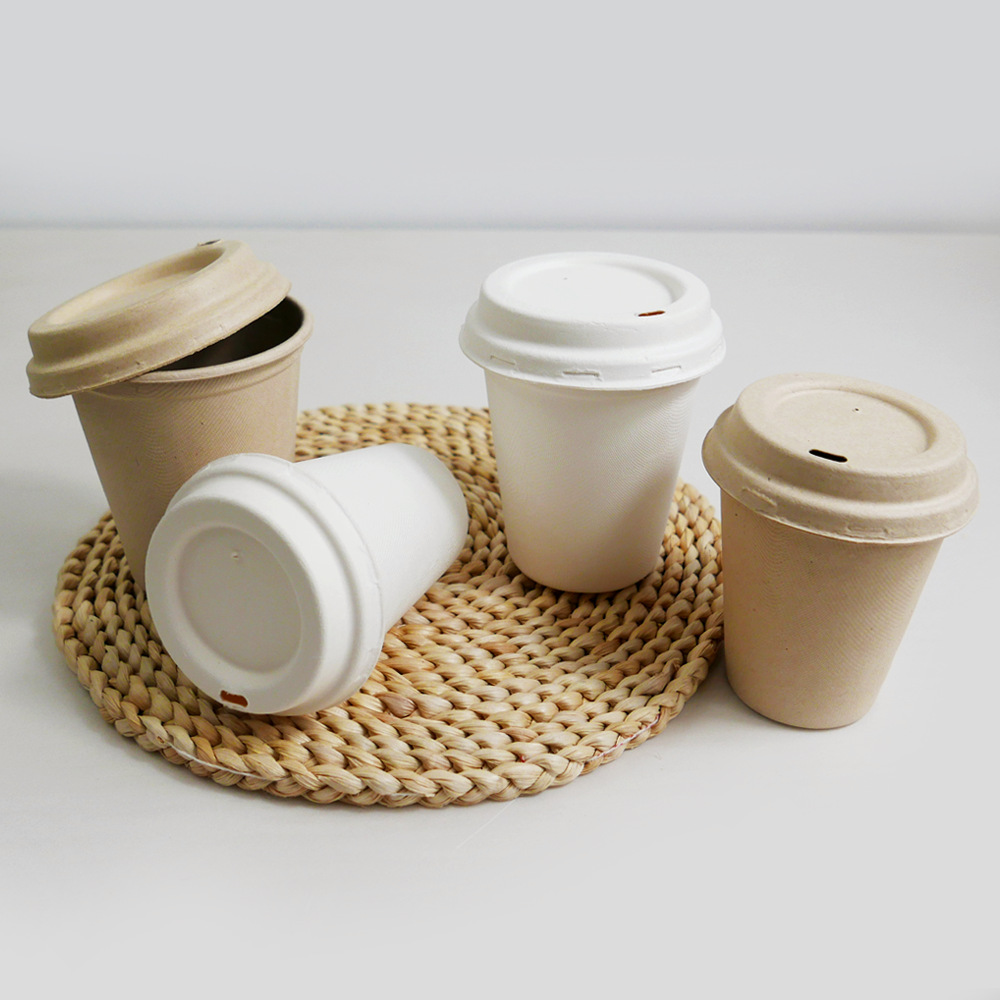
When is it worth paying more?
Many clients first ask for the cheapest price. But after a few orders, they start thinking long-term. They ask about durability, supply chain risk, and brand perception.
That’s when price vs. quality becomes a balancing act.
Cost-Quality Trade-Off Table
| Focus Area | Low Cost Supplier | High Quality Supplier |
|---|---|---|
| Price Per Cup | $0.02–$0.03 | $0.04–$0.06 |
| Product Reliability | Frequent defects | Consistent quality |
| Customer Feedback | Complaints possible | Positive experience |
| Brand Impact | May seem cheap | Premium, eco-conscious |
| Long-Term Value | Reorders risky | Repeat orders, brand loyalty |
I always recommend requesting samples and running real tests before deciding based only on price. In most cases, an extra cent per cup leads to higher sales and lower returns.
Conclusion
Choose bamboo cups wisely by matching size, material, and supplier for your actual business use.
FAQ: All About Disposable Cups & Coffee Packaging
1. Which disposable cup is best?
The best disposable cup depends on your use case, but bamboo fiber cups stand out for being:
- ✅ Eco-friendly (fully compostable)
- ✅ Heat-resistant (ideal for hot beverages)
- ✅ Premium feel (great for brand image)
Recommendations:
| Use Case | Recommended Cup Type |
|---|---|
| Hot drinks | Bamboo fiber or paper cup with sleeve |
| Cold beverages | PLA cup with dome lid |
| Events | Stackable paper or bamboo cups |
Pro tip: Match the cup’s material to your beverage and sustainability goals.
2. How to brand disposable cups?
Branding your disposable cups turns every sip into a brand moment:
- Logo printing (screen/flexo with soy-based ink)
- Custom colors to match your brand identity
- Natural texture like kraft or bamboo fiber
- Interactive elements (e.g., QR codes)
- Retail packaging for B2C presentation
Pro tip: Use consistent design across cups, trays, and sleeves for brand recognition.
3. What makes a good disposable coffee cup?
A great disposable coffee cup has:
| Feature | Why It Matters |
|---|---|
| Heat insulation | Protects hands, keeps drinks warm |
| Leak resistance | Prevents mess and soggy bottoms |
| Eco certification | Builds trust and green credentials |
| Custom print | Enhances brand visibility |
| Lid compatibility | Avoids spills during transport |
4. How to start a paper cup making business?
Step-by-step guide:
- 📊 Market Research – Analyze local demand (e.g., cafés, events)
- 🏭 Select Equipment – Semi or fully automatic machines
- 📦 Source Materials – Paperboard, bamboo pulp, PLA coating
- ✅ Get Certified – Food safety & eco-compliance
- 🚛 Set Up Logistics – Packaging and global shipping
- 🧾 Start B2B Sales – Target food service and distributors
Startup Cost: $30,000–$100,000+
5. What is the key to a good cup of coffee?
Beyond beans and brew:
- ☕ Temperature retention – Cup insulation matters
- 🛡️ Taste neutrality – Avoid flavor-altering plastics
- 👌 Ergonomics – Good hand feel improves the experience
- 🌱 Presentation – Eco look boosts brand perception
For takeaway: choose bamboo fiber or double-wall cups with secure lids.
6. Which material should be used for disposable cups?
| Material | Best For | Eco Level | Notes |
|---|---|---|---|
| Plastic | Cold drinks only | ❌ Low | Non-biodegradable, often banned |
| Paper | Low-cost branding | ⚠️ Medium | May contain plastic lining |
| PLA | Cold drinks | ✅ High | Compostable in industrial facilities |
| Bagasse | Budget eco-use | ✅ High | Great for short-term cold drinks |
| Bamboo Fiber | Premium hot/cold drinks | ✅✅ Very High | Fully compostable, elegant feel |
Conclusion: For brands focused on sustainability and performance, bamboo fiber is the best all-round material.

Ann
Hi, I’m Ann, and with over 5 years of experience in the foodservice industry, I’ve had the pleasure of working with restaurants and catering businesses to develop eco-friendly, tailored solutions that help you thrive in today’s green economy. I’m passionate about sustainability and committed to providing high-quality products that align with your values.
If you’re looking to make the switch to eco-friendly, sustainable tableware, I’m here to help! Reach out today, and let’s explore how we can support your business’s goals while contributing to a healthier planet.

